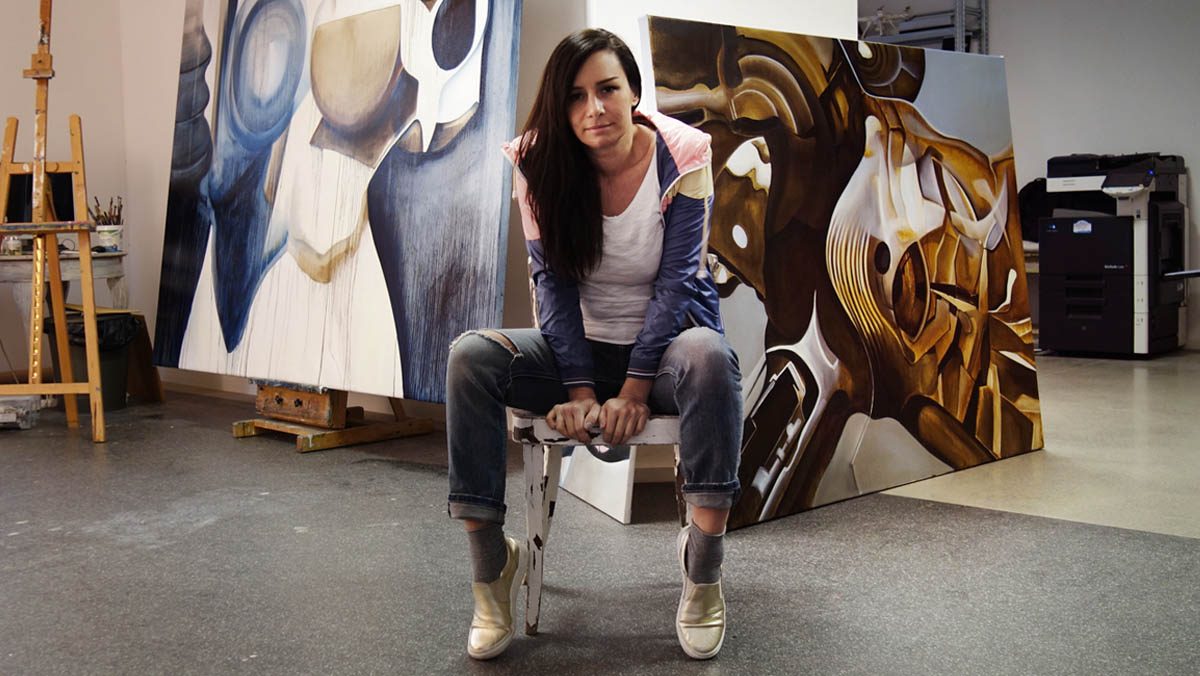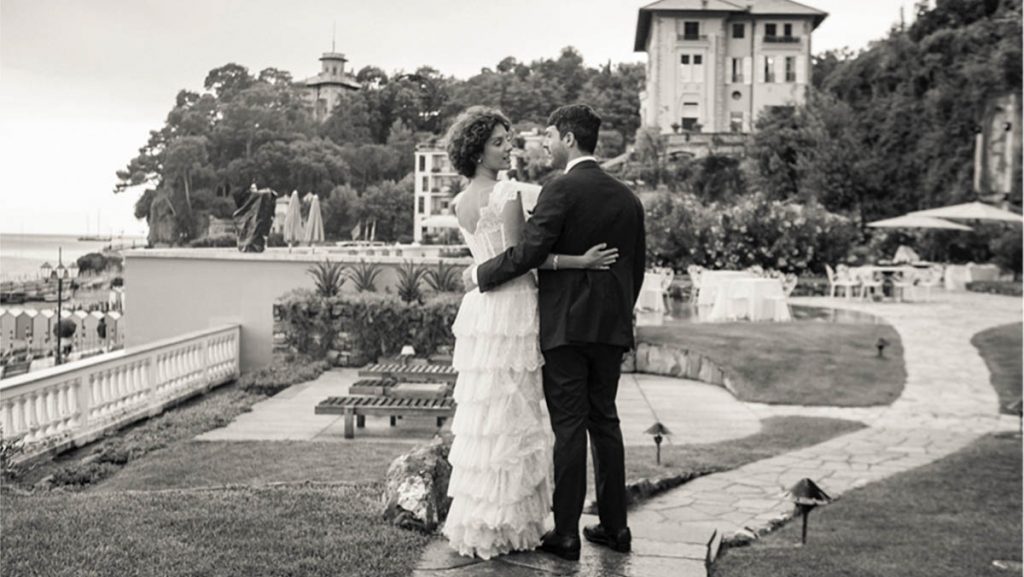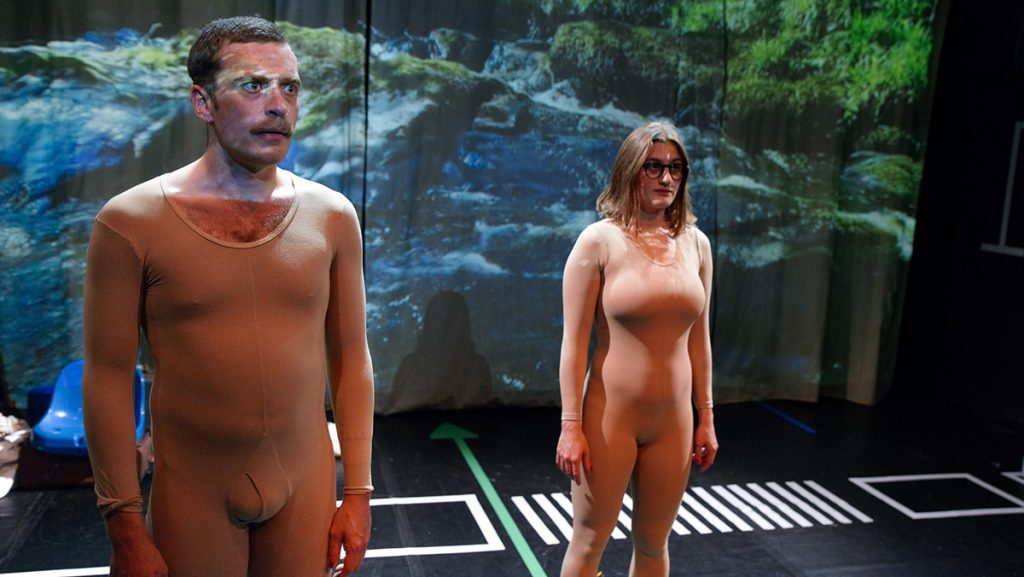Her theoretic approach connects diverse genres of art, such as architecture, painting, film, theater and sculpture. While running her own design studio, she paints large canvases and builds extra-large spatial installations.
We met at the Parallel Vienna 2020. How did you like the art fair?
To meet so many talented artists and curators was inspiring. Commercial fairs are more about galleries, which is sometimes a compromise for the artist. At Parallel Vienna the emphasis is on art. Thanks to Kahan Art Space and DATUM Magazine I was allowed to do anything, so I had the opportunity to experiment with the room.
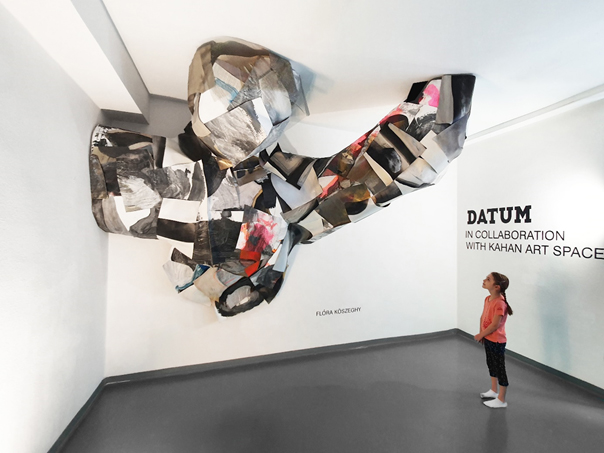
Paralell Vienna 2020 – presented by DATUM in
collaboration with Kahan Art Space
Are there similar events like the Parallel in Budapest?
There are several organized exhibitions, but on this scale and so well-organized, there is nothing like Parallel in Budapest. We have something similar at Art Quarter Budapest, where my atelier is located. AQB is in a huge old industrial building, where you can find artists, dancers, musicians and other interesting companies. We have open house events with exhibitions and performances, but these can’t be compared to Parallel Vienna.
You connect architecture and art in a conceptual approach. What does your work process look like?
Since I am an architect, every day I spend hours in the virtual space while designing a building. This has changed my relation to reality too. I have learned that in 3D software we can do anything. Scale, gravity and materiality become abstract theoretical ideas. That has an impact on our relation to reality. I am always surprised by the unrealistic things that occur while designing a house. The most inspiring for me is when a wall cuts an object and changes it with this single action. It is similar to the photograph, where the frame cuts out a detail of our view, and then this cropped reality becomes a planar image. It can be enlarged, printed and it defines a new space within the picture. In the virtual space this works differently. Objects can have their own space, and we can have a visual relation to it. With my paintings and my installations I transfer these virtual events into reality. I could print renderings and I could use VR too, but for me manual work is pivotal. These paintings are both futuristic and classical, this contradiction is essential for me.
In the virtual space this works differently. Objects can have their own space, and we can have a visual relation to it.
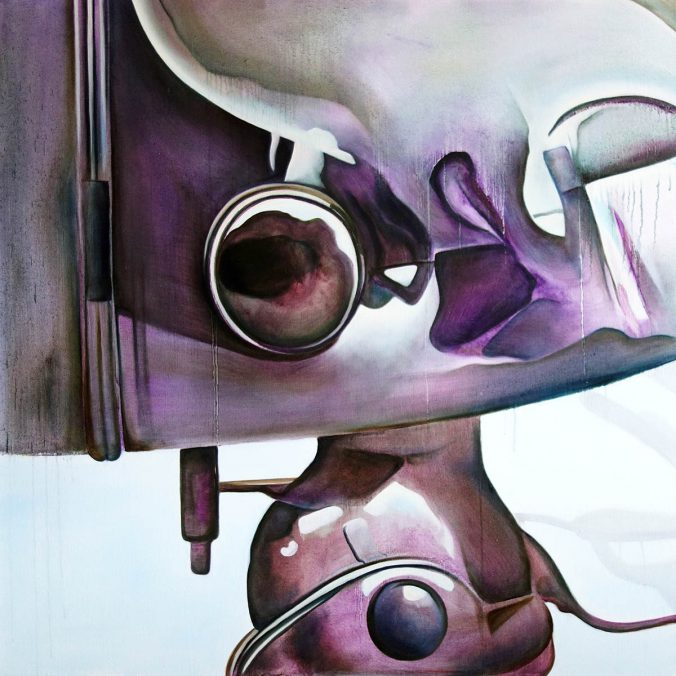
Flóra Kőszeghy 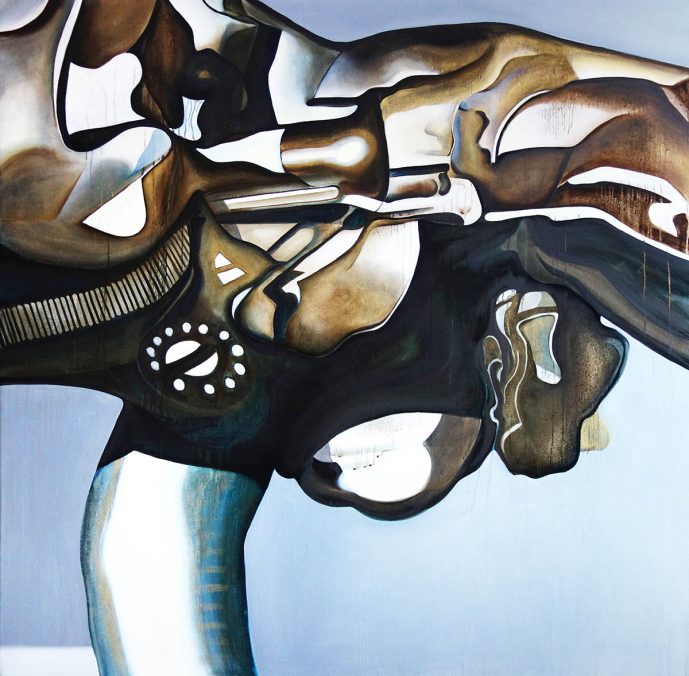
Flóra Kőszeghy 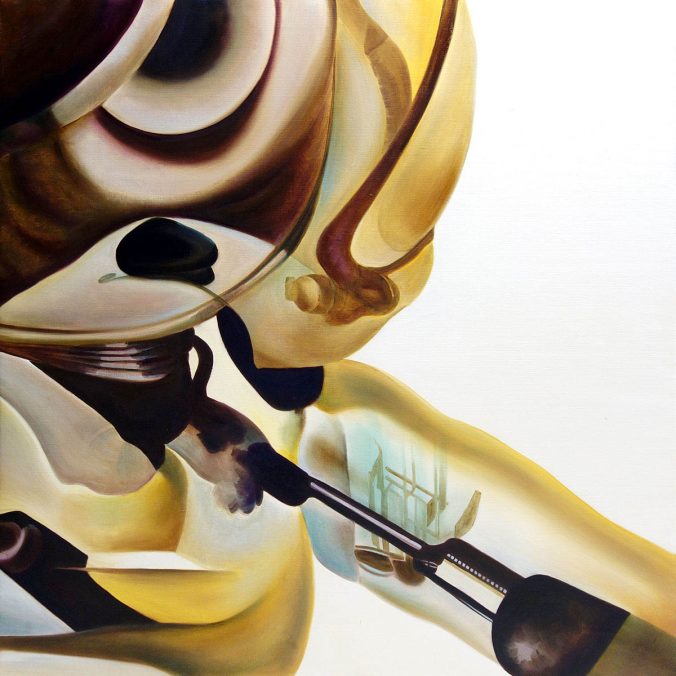
Flóra Kőszeghy 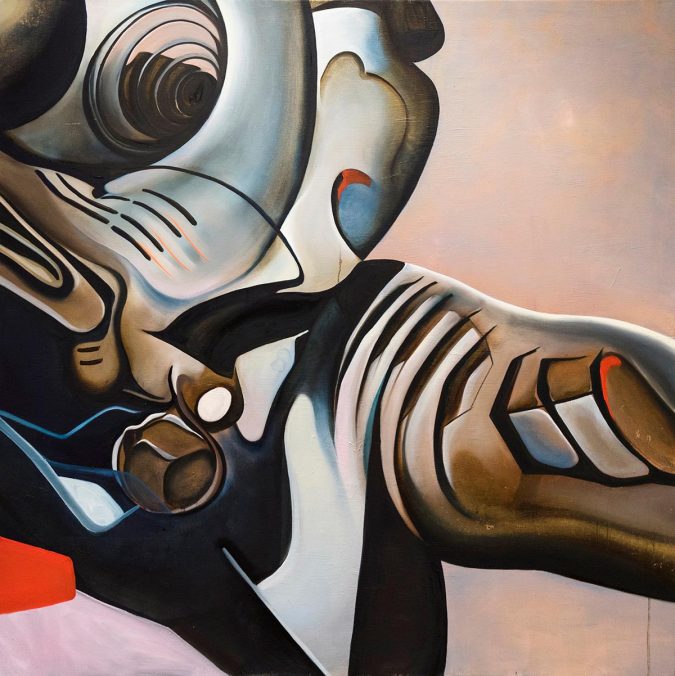
Flóra Kőszeghy 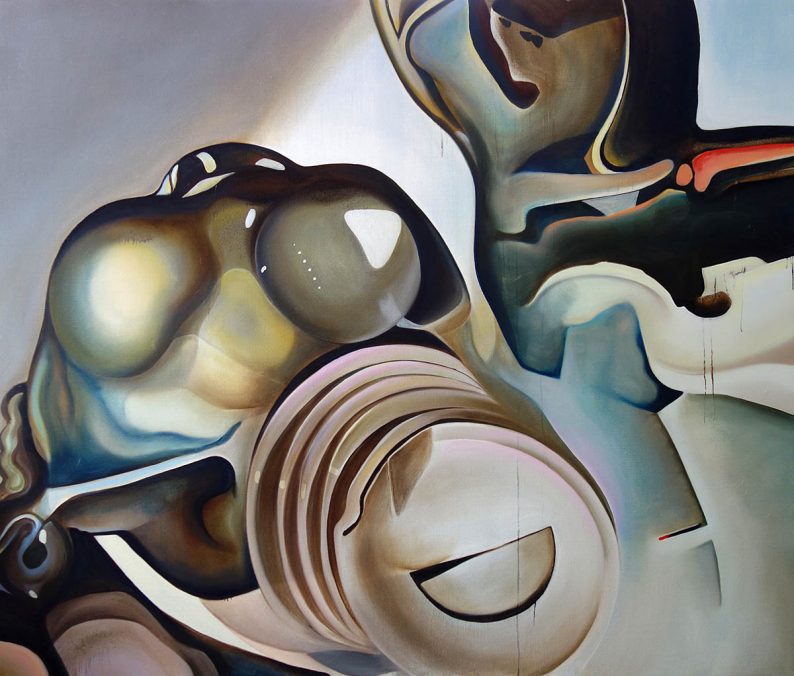
Flóra Kőszeghy
Parm, 120x120cm, oil on canvas, 2019 | Hanael 100x100cm, oil on canvas, 2020 | Fenel, 120x140cm, oil on canvas, 2020
How would you describe your artworks?
My paintings are figurative and abstract at the same time. These works need the involvement of the viewer. The hidden riddles in the images, views or spatial installations balance on the edge of recognizability. It is apparent that these forms are not made-up, but finding the origins needs effort, without the promise of complete comprehension. Meanwhile, from a distance the image can be recognized as a huge robotic, cyborg creature. These large paintings provoke the spectators to change their viewing angle, just like zooming in and out. For me this is a deconstructed representation of the screen’s impact on us.
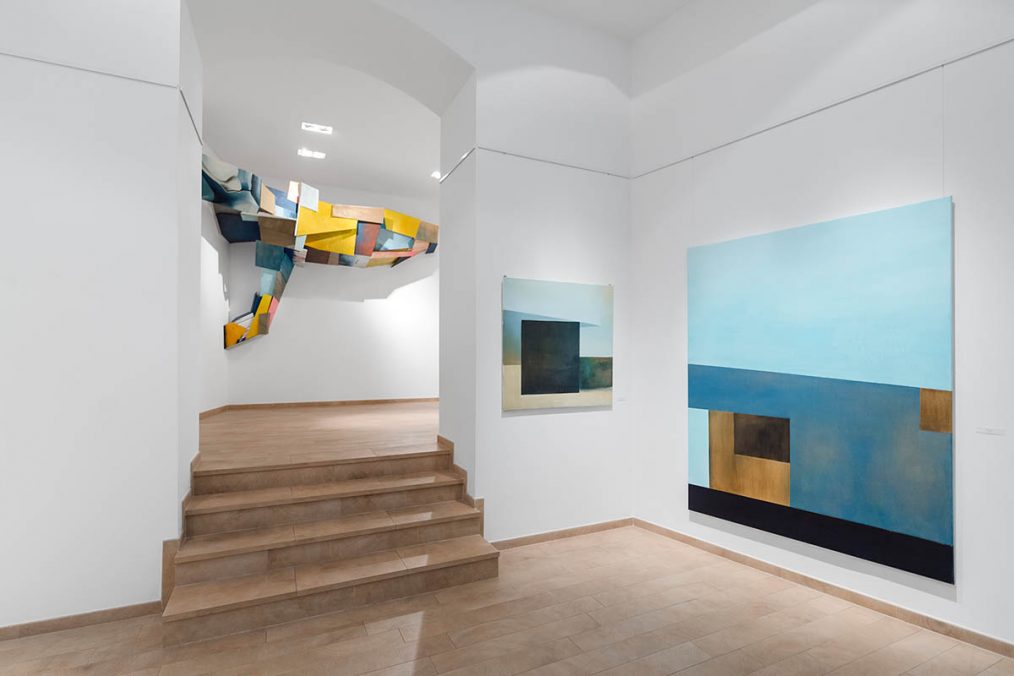
Spatial cuts vol2-OD-photo-Réka Hegyháti_3 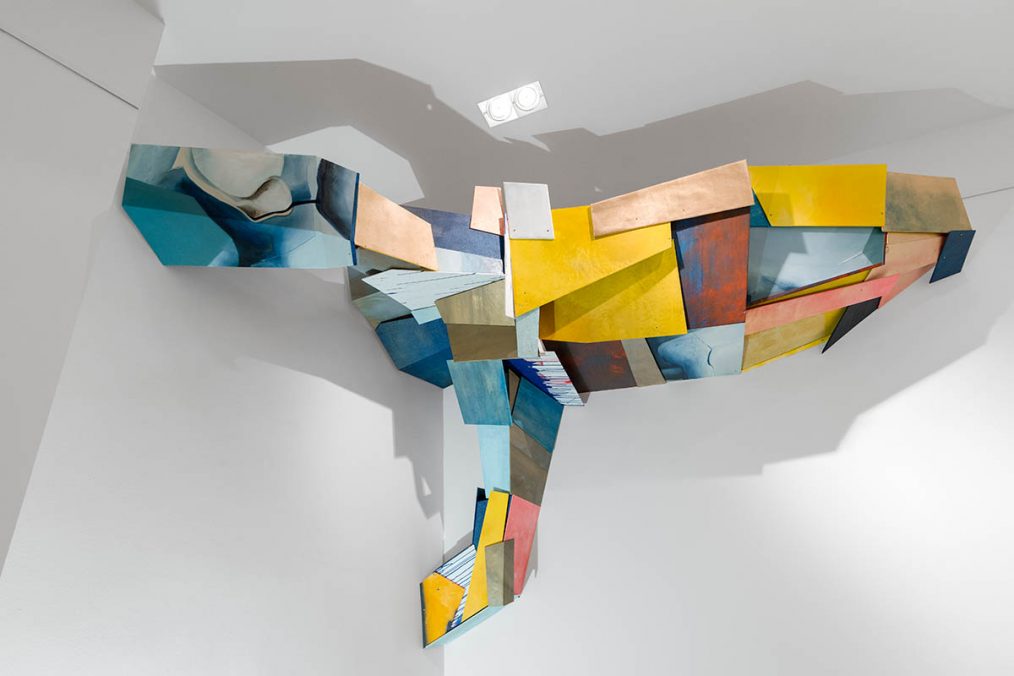
Spatial cuts vol2-OD-photo-Réka Hegyháti_3 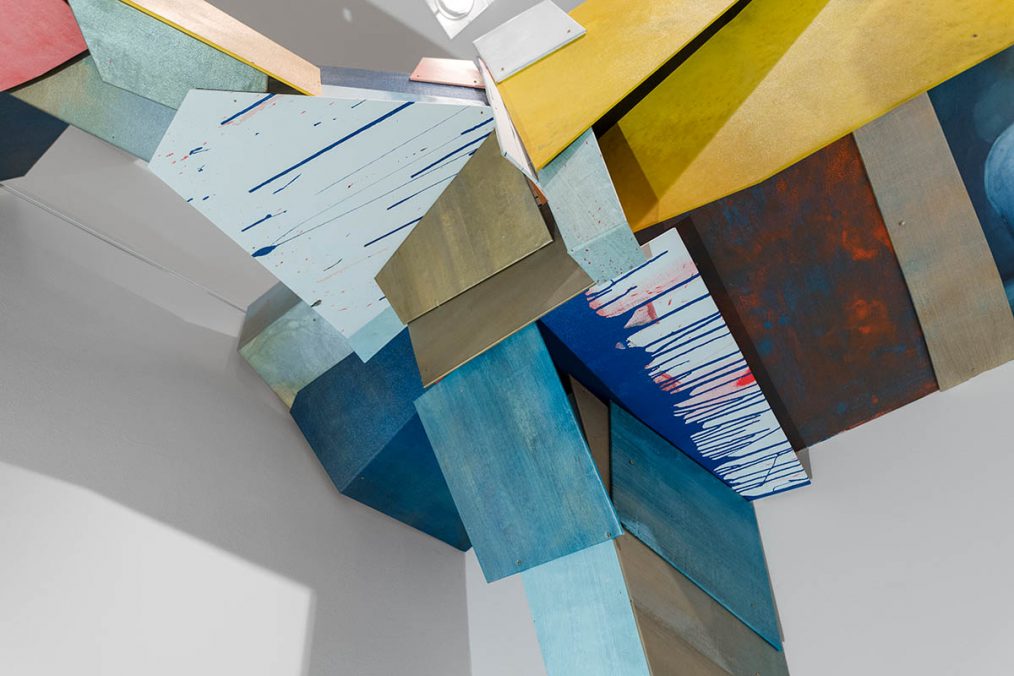
Spatial cuts vol2-OD-photo-Réka Hegyháti_3
Can you tell us something about your huge installations?
These site-specific installations are enlarged details of objects, figures, cut by the walls and ceilings of the exhibition space. The surreality of these sculptures arises from their scale and their spatial relations. As a former member of the Tiba Architecture Studio I was one of the designers of the Telekom’s and T-System’s Headquarters in Budapest. While working on that project I had the opportunity to realize this artistic concept on the facade of one of the biggest buildings in Hungary’s capital. Huge golden crystals are indented into the curtain wall like cuts. Later I started building spatial installations, where I continued to experiment with the idea of spatial cutting. The first of the series was a giant drill bit boring through the room. The second and the third were human figures, an angel and an Atlas traversing corners. These were also meant to be three dimensional paintings. For Parallel I painted 20 m2 canvases just to cut into pieces and cover the surface of the titan. These installations also challenge me as an engineer. I have plans for the future, I want to make them larger and larger, but in the meantime I have to solve the problems of execution too. I enjoy these tasks, I know that as an architect I can go up to any scale. I hope in the future I will have the opportunity to design a building for these installations.
The first of the series was a giant drill bit boring through the room. The second and the third were human figures, an angel and an Atlas traversing corners.
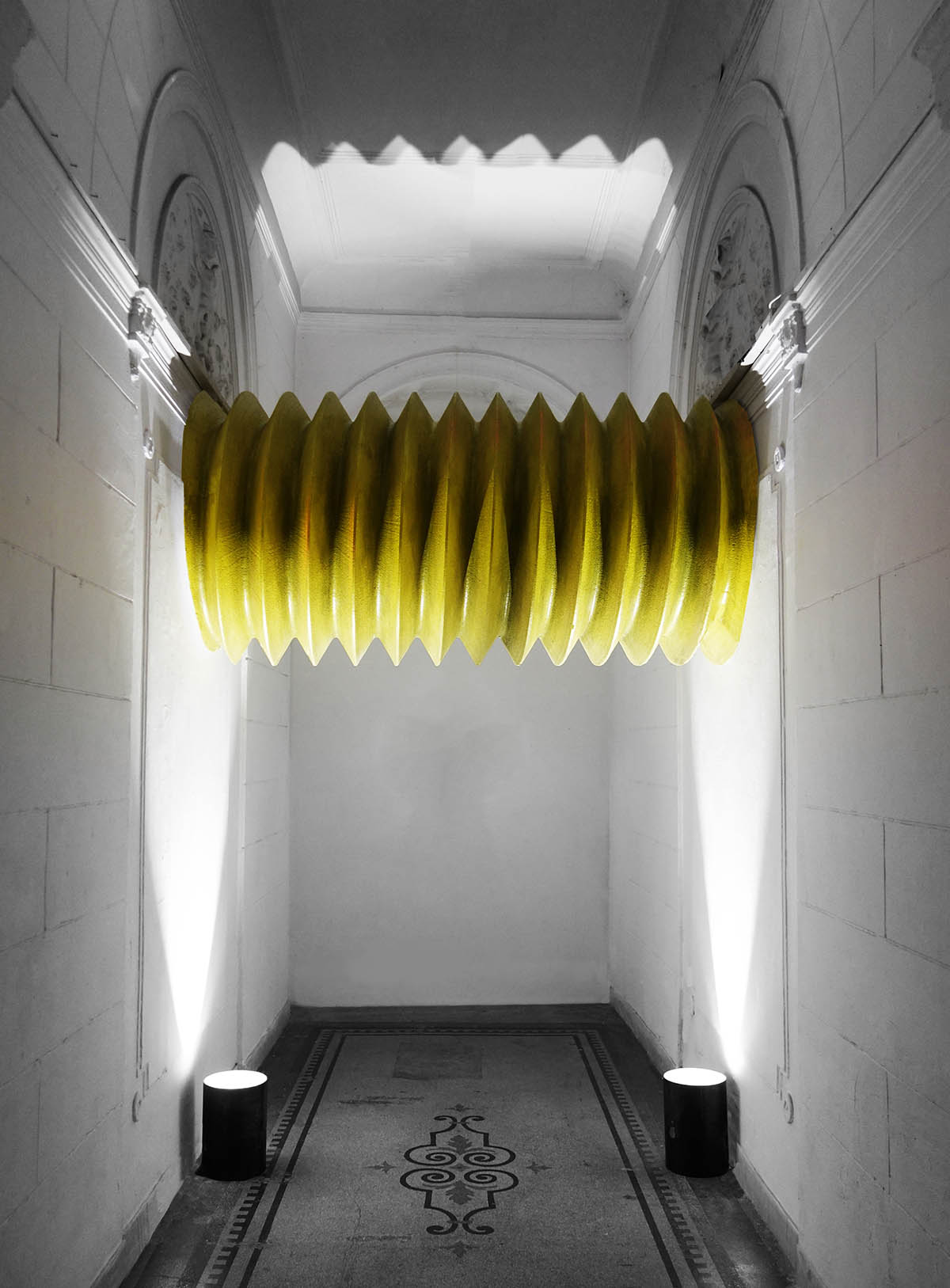
Your artist statement.
In my works I am looking for new ways of connecting art and architecture. Architecture is involved in the virtual space because of the design process. Meanwhile I use these experiences as an artist, I consider art as a planar, spatial or temporal possibility of mixing the virtual and the physical. The imaginary world of art complemented with the spatiality and scale of architecture can show new directions which can lead to questions about our inner qualities, fears and dreams in today’s and the future’s digital era.
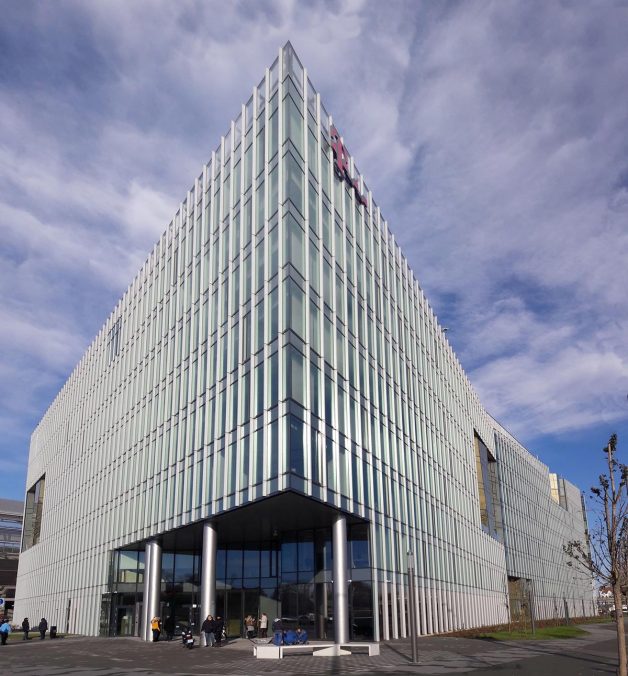
Telekom and T-Systems Headquaters Budapest-Tiba Studio 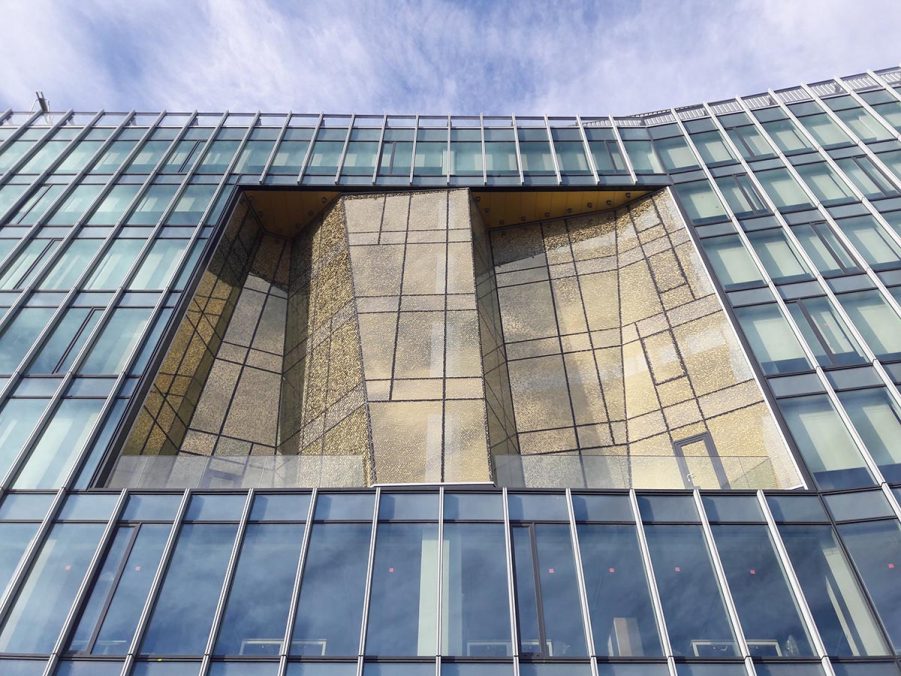
Telekom and T-Systems Headquaters Budapest-Tiba Studio
How did you feel about the year? What are your plans for next year?
I am satisfied. From August till October I participated in four exhibitions, one of which was a solo show so I can’t complain. However, I am happy to slow down again now. The lockdown had a calming effect on me, I had the opportunity to be more accurate. I have just started painting for next year’s upcoming exhibitions. I want to create larger and more complex artworks. My next spatial installation will be complemented by a full performance event, accompanied by music and lights. If everything goes well the execution of one of my largest architectural projects will start next year. It is a cultural center in the city center of Budapest, and the building’s concept is in connection with my spatial artistic program. With all these works I hope I can continue to blur the boundaries between my planar and spatial works.
Flóra Kőszeghy – www.florakoszeghy.com




